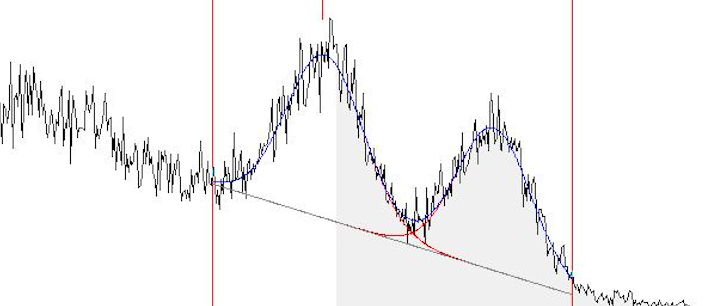Your data looks like it could be described with a linear trend plus two gaussian-shaped curves requiring 8 parameters: 2 for the linear trend and 3 for each gaussian-shape. Your code only allows for the linear trend and one gaussian shape.
Here is some made-up data roughly in the form of what you show:
x = Range[1000]/1000;
parms = {a1 -> 0.7, a2 -> -0.6, a3 -> 0.5, a4 -> 0.04, a5 -> 0.5,
a6 -> 0.4, a7 -> 0.03, a8 -> 0.75};
y = (a1 + a2 x + a3 Exp[-(x - a5)^2/(2 a4^2)] +
a6 Exp[-(x - a8)^2/(2 a7^2)] /. parms) +
RandomVariate[NormalDistribution[0, 0.05], 1000];
data = Transpose[{x, y}];
ListPlot[data, AspectRatio -> 1/2, Joined -> True, ImageSize -> Large]

To get appropriate results from NonlinearModelFit you'll need to reasonable starting values for the gaussian shape parameters which you can get from looking at your data.
nlm = NonlinearModelFit[data,
a1 + a2 z + a3 Exp[-(z - a5)^2/(2 a4^2)] + a6 Exp[-(z - a8)^2/(2 a7^2)],
{a1, a2, a3, {a4, 0.05}, {a5, 0.5}, a6, {a7, 0.1}, {a8, 0.7}}, z, MaxIterations -> 1000];
nlm["ParameterTable"]

Show[ListPlot[data, AspectRatio -> 1/2, ImageSize -> Large],
Plot[nlm[z], {z, 0, 1}, PlotStyle -> Red]]

But you'll need to look at the residuals to see if you're missing something in the error structure such as a non-constant variance or serial correlation.




